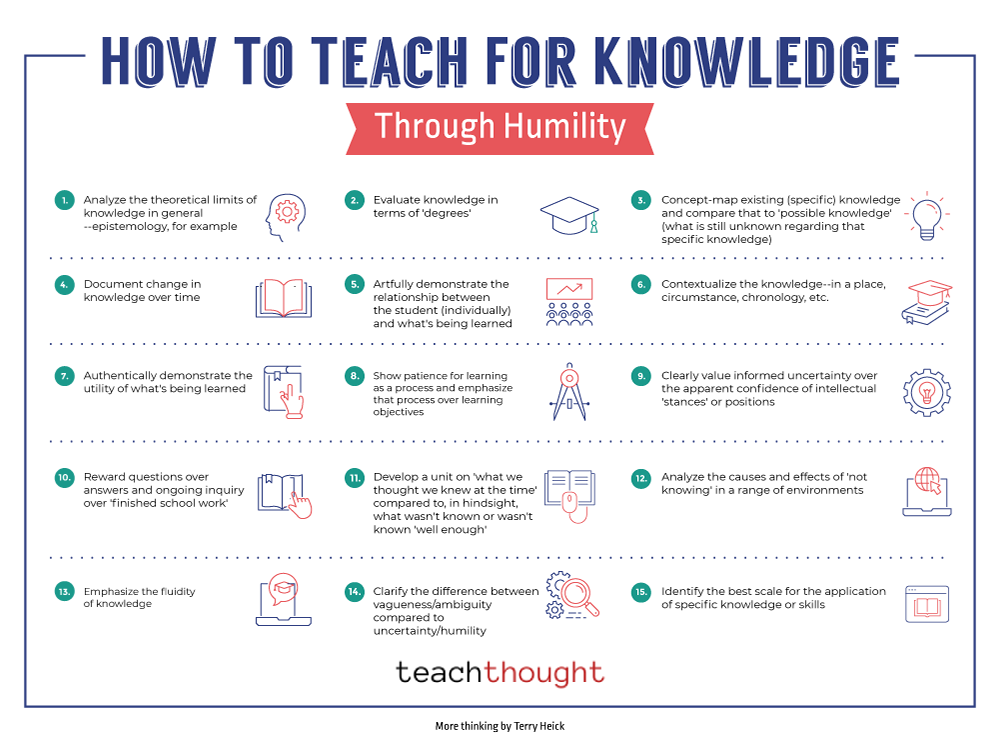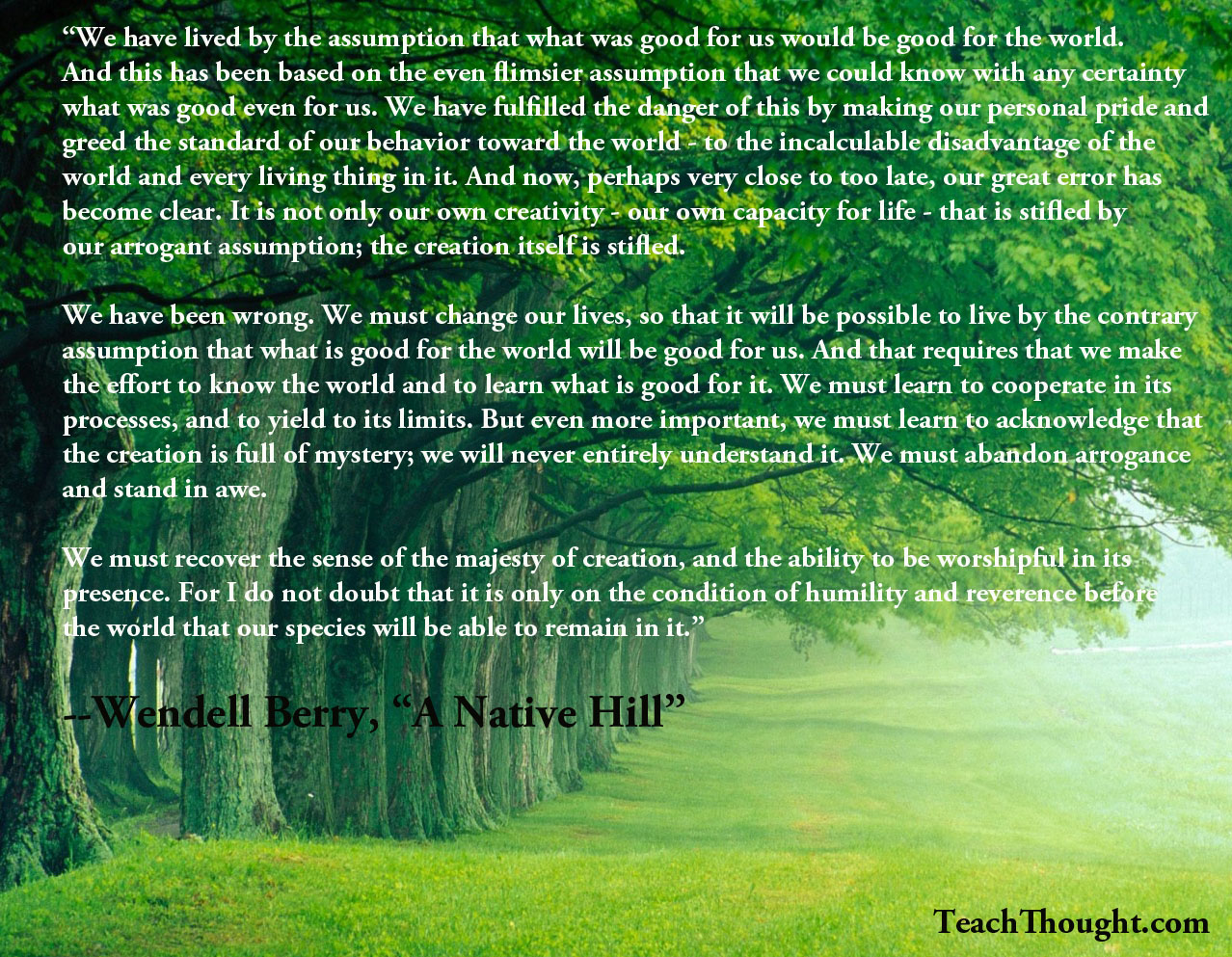

by Terry Heick
Humility is an interesting beginning point for knowing.
In an age of media that is digital, social, cut up, and constantly recirculated, the obstacle is no longer access but the quality of accessibility– and the response to after that evaluate uncertainty and “truth.”
Discernment.
On ‘Knowing’
There is an alluring and deformed feeling of “understanding” that can bring about a loss of respect and also privilege to “understand points.” If nothing else, modern technology accessibility (in much of the globe) has actually changed nuance with phenomenon, and process with accessibility.
A mind that is appropriately watchful is likewise properly modest. In A Native Hillside , Wendell Berry indicates humility and restrictions. Standing in the face of all that is unidentified can either be overwhelming– or enlightening. How would it transform the learning process to start with a tone of humility?
Humility is the core of crucial thinking. It states, ‘I don’t recognize enough to have an educated viewpoint’ or ‘Let’s discover to lower uncertainty.’
To be self-aware in your own knowledge, and the restrictions of that expertise? To clarify what can be known, and what can not? To be able to match your understanding with a genuine requirement to understand– job that naturally reinforces critical believing and continual query
What This Appears like In a Classroom
- Assess the limitations of expertise in plain terms (a straightforward introduction to epistemology).
- Examine understanding in degrees (e.g., particular, likely, possible, unlikely).
- Concept-map what is presently understood about a details subject and contrast it to unanswered questions.
- File exactly how expertise changes over time (personal understanding logs and historic photos).
- Show how each student’s point of view forms their relationship to what’s being discovered.
- Contextualize understanding– place, circumstance, chronology, stakeholders.
- Demonstrate authentic energy: where and just how this expertise is utilized outdoors college.
- Program perseverance for discovering as a procedure and emphasize that procedure together with objectives.
- Clearly worth informed unpredictability over the confidence of fast final thoughts.
- Compensate recurring concerns and follow-up examinations more than “ended up” solutions.
- Produce a device on “what we thought we knew after that” versus what hindsight reveals we missed out on.
- Examine domino effects of “not understanding” in scientific research, background, public life, or everyday choices.
- Highlight the liquid, developing nature of understanding.
- Differentiate vagueness/ambiguity (lack of clarity) from uncertainty/humility (understanding of limits).
- Determine the very best scale for using specific knowledge or skills (individual, neighborhood, systemic).
Research study Note
Research study reveals that individuals that practice intellectual humility– being willing to confess what they don’t understand– are a lot more open to finding out and much less likely to hold on to incorrect assurance.
Source: Leary, M. R., Diebels, K. J., Davisson, E. K., et al. (2017 Cognitive and interpersonal functions of intellectual humbleness Individuality and Social Psychology Bulletin, 43 (6, 793– 813
Literary Example
Berry, W. (1969 “An Indigenous Hillside,” in The Long-Legged Residence New York City: Harcourt.
This concept might seem abstract and even out of area in progressively “research-based” and “data-driven” systems of discovering. But that is part of its worth: it assists students see expertise not as dealt with, yet as a living procedure they can accompany treatment, proof, and humbleness.
Training For Understanding, Knowing Via Humbleness

